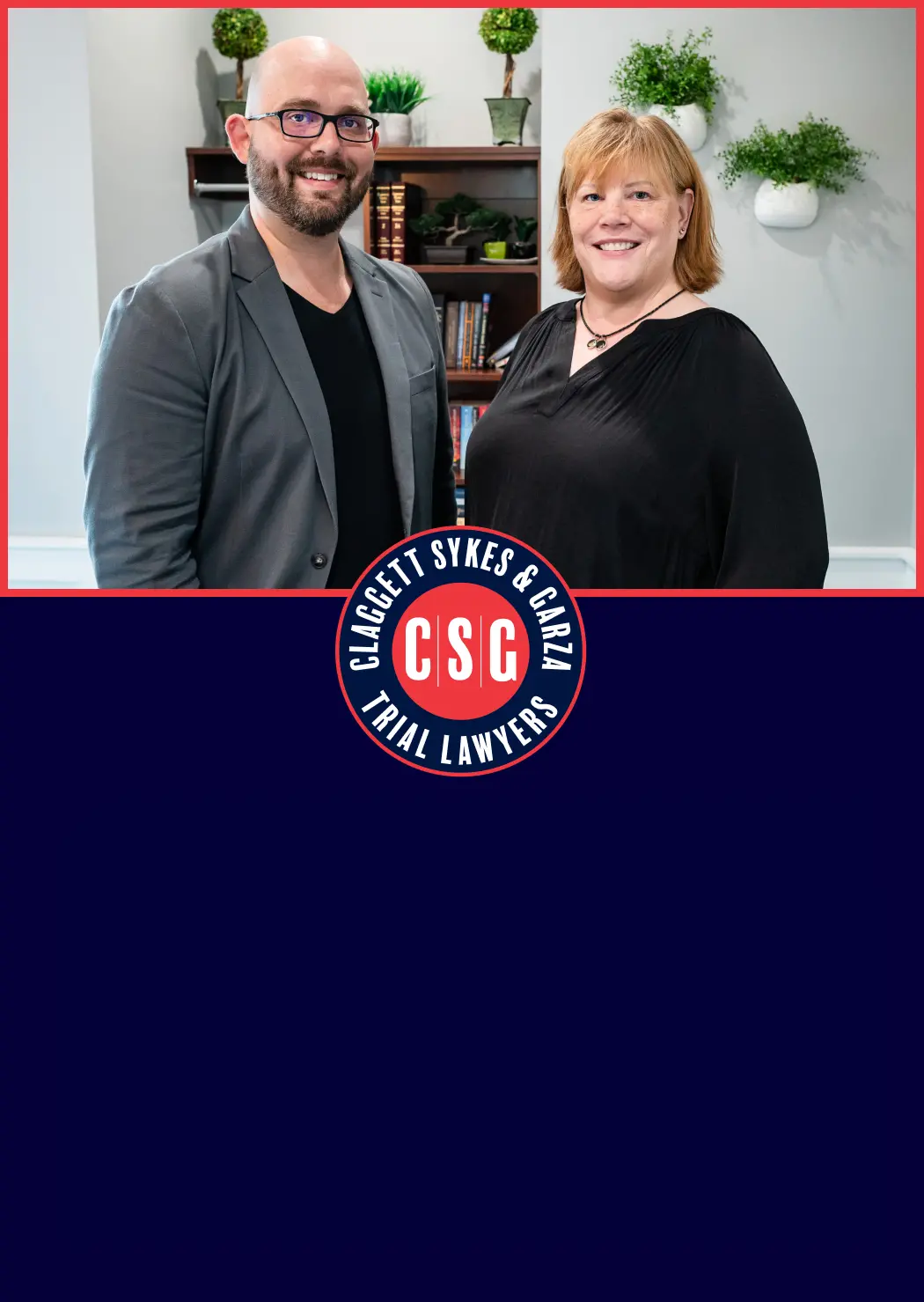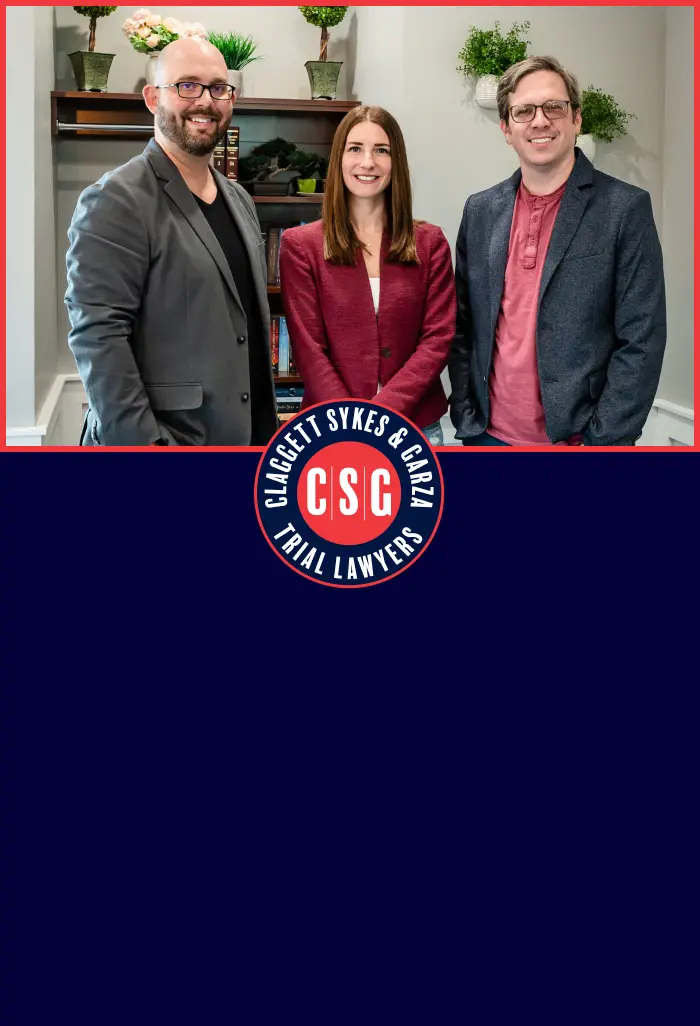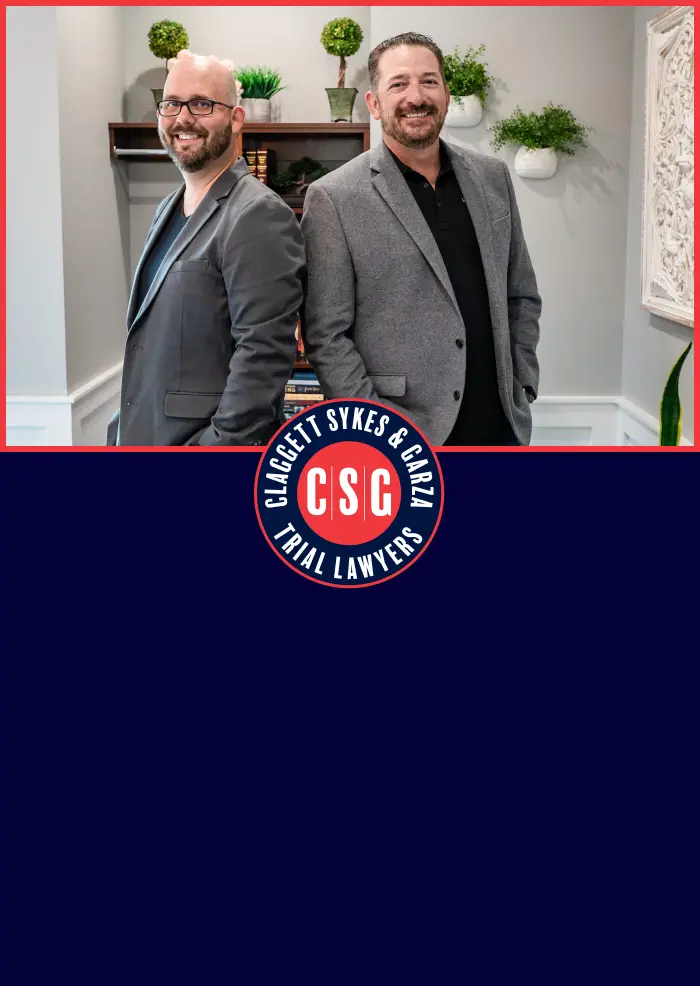When healthcare providers fail to accurately diagnose medical conditions, patients suffer devastating consequences that could have been prevented. Has a medical misdiagnosis in Connecticut harmed you or a loved one? Speaking with an experienced medical malpractice attorney in Connecticut can help you understand your rights. Explore your options for pursuing justice.
Our experienced Connecticut medical malpractice misdiagnosis lawyers at Claggett, Sykes & Garza Trial Lawyers can help you seek justice. Contact us online or call today at 860-471-8333 for a free consultation to discuss your misdiagnosis case.
Understanding Medical Misdiagnosis in Connecticut
Medical misdiagnosis can occur when healthcare providers:
- Fail to correctly identify a patient’s condition
- Delay treatment due to failure to identify a patient’s condition
- Delay treatment due to misdiagnosis
- Provide inappropriate treatment
- Provide no treatment at all
In Connecticut hospitals and medical facilities, diagnostic errors can result in avoidable suffering and, in some cases, lasting harm or loss of life. Reports from the Connecticut Department of Public Health indicate that healthcare providers continue to experience serious adverse events annually, many of which involve preventable mistakes that could be avoided through improved diagnostic practices.
Nationally, leading medical organizations warn that diagnostic errors remain a major patient-safety concern in the United States, with many individuals experiencing significant harm or even death due to these avoidable failures in the diagnostic process.

Get the Compensation You Deserve. Our Experienced Lawyers Can Help.
Common Types of Diagnostic Errors
Diagnostic errors take several forms in Connecticut medical settings. Medical malpractice involves incorrectly identifying a condition as something else entirely, such as diagnosing a heart attack as acid reflux. The Joint Commission reports that diagnostic errors are responsible for 6% to 17% of adverse events in hospital settings.
Delayed Diagnosis
Delayed diagnosis occurs when healthcare providers reach the correct diagnosis, but only after a significant and potentially harmful delay. Our experienced medical malpractice attorneys in Connecticut have handled numerous cases where delayed diagnosis led to worsened patient outcomes and significant settlements.
Failure to Diagnose
Failure to diagnose represents the most serious error, where medical professionals completely miss a condition that should have been identified through proper examination and testing. Emergency room settings present particular risks for diagnostic errors due to time pressures and high patient volumes.
These errors often stem from inadequate practices such as:
- Inadequate patient history taking
- Failure to order appropriate diagnostic tests
- Misinterpretation of test results
- Failure to consider differential diagnoses
Connecticut medical malpractice lawyers understand these complex diagnostic processes and work with qualified medical experts to identify where healthcare providers failed to meet professional standards.
Impact of Misdiagnosis on Patients and Families
The consequences of medical misdiagnosis extend far beyond the initial error. Patients may undergo and/or experience:
- Unnecessary treatments
- Experience disease progression that could have been prevented
- Suffer complications from delayed intervention
Families face emotional trauma, financial hardship from mounting medical bills, and the devastating reality that their loved one’s condition could have been treated successfully with timely diagnosis. Our case results demonstrate the significant impact these errors have on Connecticut families.
In Connecticut, we have represented families whose lives were forever changed by preventable diagnostic errors. The physical, emotional, and financial toll of misdiagnosis creates ripple effects that impact entire families for years or even decades. Our Connecticut medical malpractice team provides compassionate support throughout the legal process.

Let Us Fight for Your Rights and Maximize Your Compensation.
Frequently Misdiagnosed Conditions in Connecticut Hospitals
Connecticut medical facilities see patterns of misdiagnosis across several serious conditions. Understanding these patterns helps patients recognize when they may have grounds for a medical malpractice claim. The National Academy of Medicine has identified common categories of misdiagnosed conditions that frequently result in patient harm.
Cancer Misdiagnosis
Cancer misdiagnosis represents one of the most devastating forms of diagnostic error. Early-stage cancers may be dismissed as benign conditions, while aggressive cancers may be misidentified as less serious ailments. Various types of cancer can be subject to misdiagnosis in Connecticut hospitals.
Radiologists may misread imaging studies, pathologists may incorrectly interpret biopsy results, or primary care physicians may fail to recognize warning signs that warrant further investigation. When cancer goes undiagnosed, patients lose critical treatment windows that could mean the difference between a cure and terminal illness. Our medical negligence attorneys have successfully represented numerous cancer misdiagnosis victims.
Heart Attack and Stroke Misdiagnosis
Cardiovascular emergencies require immediate recognition and treatment. Heart attacks in women are particularly prone to misdiagnosis, as symptoms may differ from the classic chest pain presentation seen in men. Healthcare providers may dismiss heart attack symptoms as anxiety, heartburn, or muscle strain.
Stroke misdiagnosis is equally dangerous, with emergency room physicians sometimes attributing stroke symptoms to less serious conditions like migraines, inner ear problems, or intoxication. The critical “golden hour” for stroke treatment makes accurate diagnosis essential for preventing permanent brain damage, as recognized by the Centers for Disease Control and Prevention.
Our Connecticut trial lawyers have secured substantial verdicts for families affected by cardiovascular misdiagnosis cases.
Infection and Sepsis Misdiagnosis
Serious infections and sepsis can rapidly become life-threatening if not promptly diagnosed and treated. Healthcare providers may mistake early sepsis symptoms for less serious conditions, leading to delays in antibiotic treatment and supportive care. Meningitis, pneumonia, and other serious infections require immediate medical intervention to prevent complications or death.
The Agency for Healthcare Research and Quality emphasizes the importance of early recognition and treatment of sepsis to prevent patient harm.

Experienced Personal Injury Lawyers Ready to Assist You.
Proving Medical Malpractice in Connecticut Misdiagnosis Cases
Successfully pursuing a medical malpractice claim for misdiagnosis in Connecticut requires establishing four key elements: duty, breach of duty, causation, and damages. Our experienced legal team understands the complexities of Connecticut medical malpractice law and works with qualified medical experts to build compelling cases.
Connecticut Medical Malpractice Laws
Connecticut follows specific statutes governing medical malpractice claims. The state imposes a two-year statute of limitations from the date of discovery of the malpractice, though this period may be extended in certain circumstances. Unlike some states, Connecticut does not cap damages in medical malpractice cases, allowing full compensation for victims of diagnostic errors.
Connecticut law requires plaintiffs to prove that the healthcare provider’s actions fell below the accepted standard of care and that this breach directly caused the patient’s injuries. Medical expert testimony is mandatory to establish both the standard of care and the deviation from that standard, as outlined by Connecticut General Statutes.
Standard of Care Requirements
The standard of care in Connecticut medical malpractice cases is defined as the level of care that a reasonably competent healthcare provider in the same specialty would provide under similar circumstances. For diagnostic cases, this involves evaluating whether the physician conducted an appropriate examination, ordered necessary tests, properly interpreted results, and considered reasonable differential diagnoses.
Our legal team works with board-certified physicians and specialists who can testify about the appropriate diagnostic process and identify where the defendant healthcare provider failed to meet professional standards. This expert testimony is crucial for establishing liability in Connecticut misdiagnosis cases.
Compensation Available for Connecticut Misdiagnosis Victims
Victims of medical misdiagnosis in Connecticut may recover both economic and non-economic damages. The absence of damage caps in Connecticut allows for full compensation based on the actual harm suffered by the patient and their family.
Economic Damages
Economic damages compensate for the financial losses resulting from misdiagnosis. These include additional medical expenses for corrective treatment, ongoing care costs, rehabilitation expenses, and lost wages during recovery. For cases involving permanent disability or reduced life expectancy, economic damages may include future medical costs and lost earning capacity.
Our attorneys work with medical economists and life care planners to accurately calculate the full economic impact of misdiagnosis. This comprehensive approach ensures that clients receive compensation for both current and future financial losses.
Non-Economic Damages
Non-economic damages address the intangible losses from misdiagnosis, including pain and suffering, emotional distress, loss of enjoyment of life, and loss of consortium for spouses. These damages recognize that the impact of medical malpractice extends beyond financial losses to affect every aspect of a patient’s life.
Connecticut courts have awarded substantial non-economic damages in misdiagnosis cases, particularly those involving cancer, heart attacks, strokes, and other serious conditions where delayed diagnosis significantly impacts prognosis and quality of life. Our record-breaking verdicts demonstrate our ability to secure maximum compensation for our clients.
Why Choose Claggett, Sykes & Garza Trial Lawyers for Your Connecticut Misdiagnosis Case?
Claggett, Sykes & Garza Trial Lawyers brings unparalleled experience and results to Connecticut medical malpractice cases. Our boutique trial firm focuses exclusively on serious injury cases, enabling us to dedicate the necessary resources and attention to complex medical malpractice litigation.
Record-Breaking Medical Malpractice Results
Our track record speaks to our commitment to achieving justice for medical malpractice victims. Our $100 million verdict in a catastrophic injury case represents the largest bodily injury verdict in Connecticut history, demonstrating our ability to handle the most complex cases.
Jonathan “Jak” Kocienda, our medical malpractice attorney, brings 27 years of legal experience, with 22 years of that experience specifically focused on medical malpractice cases. His deep understanding of medical standards and litigation strategies has resulted in numerous successful outcomes for Connecticut families affected by diagnostic errors.
Our “Big Hearts/Big Data/Big Justice” approach combines compassionate client service with cutting-edge litigation technology and aggressive trial advocacy. We accept only cases involving serious injuries, ensuring that each client receives the focused attention their case deserves.
Legal Awards & Recognition
Our attorneys have earned recognition from peers and legal organizations for their excellence in trial advocacy and client service. Andrew Garza received the 2022 Keenan Trial Institute Trial Lawyer of the Year award and the 2023 New England Legal Awards Lawyer of the Year recognition. He has been selected for Super Lawyers from 2016-Present and named to Best Lawyers in America for Personal Injury Litigation – Plaintiffs in 2024-Present.
Sean Claggett earned Trial Lawyer of the Year from the Nevada Justice Association in 2017 and maintains an AV Preeminent rating from Martindale-Hubbell and a 10.0 “Superb” rating from Avvo. These recognitions reflect our commitment to the highest standards of legal representation and client service.
Contact Our Medical Misdiagnosis Lawyers Today
If you believe you or a loved one has been harmed by a medical misdiagnosis in Connecticut, time is critical. The statute of limitations for medical malpractice claims is limited, and early investigation is essential for preserving evidence and building a strong case.
Claggett, Sykes & Garza Trial Lawyers offers free consultations for potential medical malpractice cases. We work on a contingency fee basis, meaning you pay no attorney fees unless we recover compensation for your case. Our Connecticut offices are located in Farmington and Enfield and serve clients throughout the state.
Contact our experienced Connecticut medical malpractice lawyers today. You can reach us online to schedule your free consultation, or call us at 860-471-8333. Let our record of success work for you in seeking justice for the harm caused by diagnostic errors. Our client reviews also speak to the support we provide every step of the way.
Frequently Asked Questions About Connecticut Medical Misdiagnosis Cases
What is the statute of limitations for medical malpractice in Connecticut?
Connecticut law provides a two-year statute of limitations for medical malpractice claims, beginning from the date of discovery of the malpractice. This discovery rule recognizes that patients may not immediately realize they have been victims of medical negligence. However, there is also an absolute statute of repose that bars claims filed more than three years after the act of malpractice, with limited exceptions.
How do I prove my doctor misdiagnosed my condition?
Proving misdiagnosis requires demonstrating that your healthcare provider failed to meet the accepted standard of care in diagnosing your condition. This involves showing that a competent physician in the same specialty would have reached the correct diagnosis under similar circumstances. Medical expert testimony is required to establish both the appropriate standard of care and the deviation from that standard.
What compensation can I recover for a misdiagnosis?
Connecticut allows recovery of both economic and non-economic damages in medical malpractice cases. Economic damages include medical expenses, lost wages, and future care costs. Non-economic damages compensate for pain and suffering, emotional distress, and loss of enjoyment of life. Connecticut does not cap damages in medical malpractice cases, allowing for full compensation based on the actual harm suffered.
Do I need a medical expert to prove my case?
Yes, Connecticut law requires medical expert testimony in malpractice cases to establish the standard of care and prove that the defendant healthcare provider breached that standard. Our legal team works with qualified medical experts who can explain complex medical issues to judges and juries and provide credible testimony about the appropriate diagnostic process.
How long do medical malpractice cases take in Connecticut?
Medical malpractice cases typically take 18 months to three years to resolve, depending on the complexity of the case and whether it settles or goes to trial. Cases involving misdiagnosis often require extensive medical record review, expert witness preparation, and discovery. Our attorneys work efficiently to move cases forward while ensuring thorough preparation for the best possible outcome.
Related Posts
Can You Sue a Hospital for Misdiagnosis?

